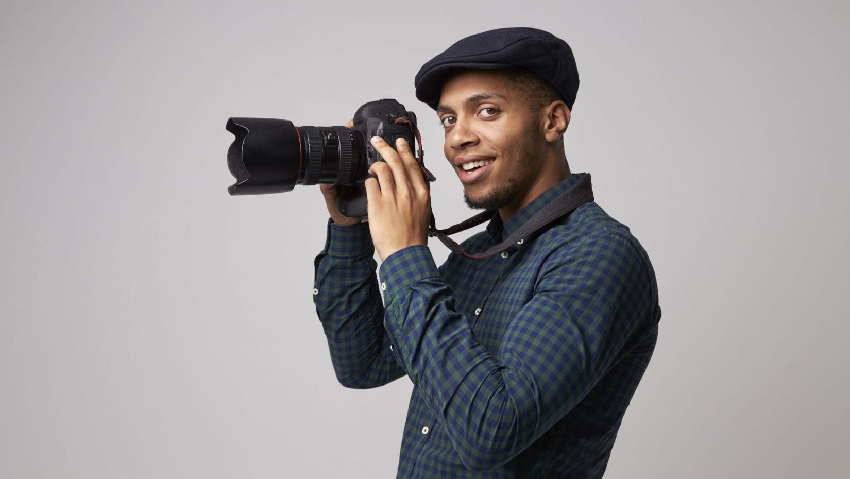
26 Jan Eleven best fashion photography tips
Fashion photography is one of the most extensive and innovative forms of photography. Since it combines the idea of fine art with commerce, each fashion photographer is unique with his style and vision. While some fashion work can be described as couture, lifestyle, or street, the options are endless for your work within this photography niche.
Although each fashion photographer has their own method of shooting, here are some key tips that every photographer should remember when working in the fashion field.
Use Various Framing Methods

Fashion photography is the culmination of portraits and long-form images. The key detail to remember is that a good fashion photographer is always experimenting with framing and composition. The idea is to capture the viewer’s attention and highlight the item of clothing, jewelry, or accessory you are photographing on your model. You’ll want to use framing as the close-up portrait approach along with a three-quarter crop and full-length image.
The reason why we intend to frame our topic in different ways is due to the idea that fashion is not only about clothes, but also about the history, mood, and art of creation. As a fashion photographer, you need to focus on capturing a set of images that, when put together, have a cohesive, integrating rhythm and flow.
Direct Your Subject With Poses And Movement
When photographing a model for your fashion project, you’ll need to know how to direct your subject. It is better to have an idea of the poses that suit the style of the session. You can assist the model with facial expressions, use of hands, posture adjustment, and general posture. In addition, integrating the use of movement is essential when photographing clothing. Whether you have your model play with the fabric, physically move their body by stepping, jumping, or leaning. You’ll add a dimensional element to the pieces.
Depending on the project, your model can have a variety of poses that convey a certain mood to the audience, such as strong, stoic, defeated, elated, etc. It is important to use these tools, but always make sure the pose and movement align with the overall theme and purpose of the session.
Pay Attention To Details
An important aspect to remember when shooting fashion is to pay attention to details which include fixing parts or elements that may go wrong during the shoot. This can include adjusting the model’s hair, cleaning off the makeup, wiping sweat off the face, and adjusting wrinkled or disorganized clothing – the smallest details are vital in fashion photography.
This is especially important if you are shooting a piece that will appear in a magazine or for a campaign. Yes, you can make adjustments to hair, skin, and clothing in Photoshop, but there are some elements that need to be fixed on the spot while shooting. If you pay attention to detail and have a team that fixes things as you shoot, your images will come away looking clean and professional.
Don’t Be Afraid To Experiment
The best part of fashion photography is the creativity within the niche. As a fashion photographer, you are encouraged to create your own personal style and vision in order to distinguish yourself within the photography community. It is recommended to try and try new techniques often when starting out in fashion photography. If you prefer studio settings, play around with various types of lighting. If you’re shooting outdoors or outdoors, get creative when composing your subject in the background. Add visual elements, use accessories, and choose clothing that aligns with what you hope to create.
The most successful fashion photographers are often those whose style is immediately recognizable, so be sure to start developing and building your own with every project you shoot.
Fashion photography has grown over the years to encompass a wide variety of photographic styles and personal visions. If you’re a photographer taking studio, lifestyle, or streetwear photography, these tips will help you create specialized work that’s unique to you. It is necessary to remember that the infusion of fashion and photography is an ever-evolving spectrum. In today’s world of photography, not all fashion work is focused on haute couture but encompasses a wide range of vintage, unique, and commercial brands.
Know The Lingo
Fashion photography is about selling a lifestyle to sell fashion. Glamor photography is all about selling the model (think of a sexy model in a car to sell a cheeseburger).
Within fashion photography, there are three main subcategories: catalog, editorial, and haute couture.
Cataloging is all about accurately capturing items to present for sale – images you would see in a catalog or on a product web page.
Editorial photography has more lifestyle elements added to it. And the style (of the model, the environment, and the fashion itself) is crucial.
Haute couture photography is the most avant-garde and often the most expensive. Many couture shoots have fantasy elements and can feel more like a movie set than a photoshoot.
Shoot In RAW Format. Forever
Yes, RAW images take more space and time to process, but they also have a lot more data. And are reproduced in post-production. Shooting in RAW allows you (by far) the most flexibility in photo editing in the lightroom process. And there’s really no other way to shoot if you want to set yourself up for success.
Be Prepared To Be The Director
On a film set, the person behind the camera usually follows the directions (or supports the vision) of the director. In a fashion photoshoot, the photographer is often also the director. If he’s expected to fill that role, he’ll need to consider everything from location to lighting to posing to post-production while setting up his shoot. All of these elements help you tell a story through your images. So it’s important to know what the client is trying to accomplish. So you can formulate a cohesive plan to support it.
Check Your White Balance, Early And Often
Fashion photography is all about fashion, so taking the time to white balance is crucial to ensure you get images that accurately represent the items you’re shooting.
If your lighting changes, check your white balance. Change settings? Check your white balance. You can correct a lot of things in post-production, but the more you prepare for success in advance, the better.
Set Up Your Model For Success
Give the model a clear vision of what you are trying to achieve so they can help you. He can fire in single shots or bursts, but try to avoid killing the energy of your set by squinting at your monitor between each frame he fires. For many models, especially inexperienced ones, poses that look good on camera will feel unnatural.
If their composition isn’t quite right, ask them to try making small adjustments, one at a time. If your mouth is closed, try opening it slightly to reduce the tension in your jaw. Try pushing your chin forward and down slightly, lifting (or rolling back) one shoulder. Looking in a slightly different direction, and so on.
Don’t Be Afraid Of Movement
Sometimes the best photos come from a candid or reset moment because the model isn’t feeling as tense. If you’re ready to try some “action” shots, set your camera to burst mode and have some fun.
Great action shots can include something as simple as walking towards (or past) the camera, jumping, turning your head to get hair movement, and more. Before a model starts jumping, make sure she’s wearing shoes that are comfortable. And safe (remember, they may have only been wearing those shoes for the first time a few minutes ago).
Do Not Lose Track Of Fashion
It’s easy to get caught up in making the model’s eyes pop. But if the image is supposed to sell the bag they’re carrying, you may be doing yourself a disservice. Identify early where the focus of the image needs to be. And make sure everything (background, framing, model, lighting, etc.) directs the viewer’s focus to the element it’s supposed to show.
Have you ever considered becoming a fashion photographer or do you already shoot fashion and have some of your own tips to share? Let us know your perspective on the world of fashion photography below.
You may also be interested in UNICEF Child Care Tips For Staying Home From COVID-19

Sorry, the comment form is closed at this time.